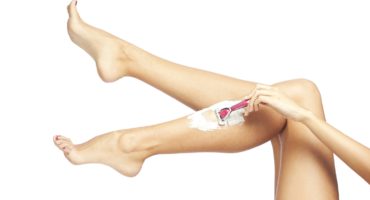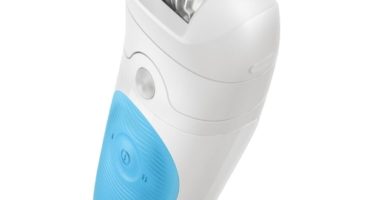- Photoepilator: contraindications and consequences
- The principle of operation of the photoepilator
- The effectiveness of the photoepilator, its disadvantages and advantages
- Home Photoepilator Efficiency
- Pros and cons of photoepilator
- Photoepilator - contraindications and consequences
- Photoepilator - recommendations for use
- Preparing for photoepilation
- Photoepilator setup and procedure
- After photoepilation
Salon procedures are not cheap, in addition, they take up the free time of a modern woman. Today, manufacturers offer to buy home-made photoepilators for self-use. But before you buy another new product, you need to study pros and cons of epilator and learn about all the nuances of photoepilation at home.
Photoepilator: contraindications and consequences
Photoepilation is a method of getting rid of excess hair by exposure to high-frequency light pulses. The equipment with which photoepilation sessions are carried out in salons is designated by the abbreviation IPL, which means “Intense pulsed light”.
We’ll help you decide which is better - photoepilator or laser.
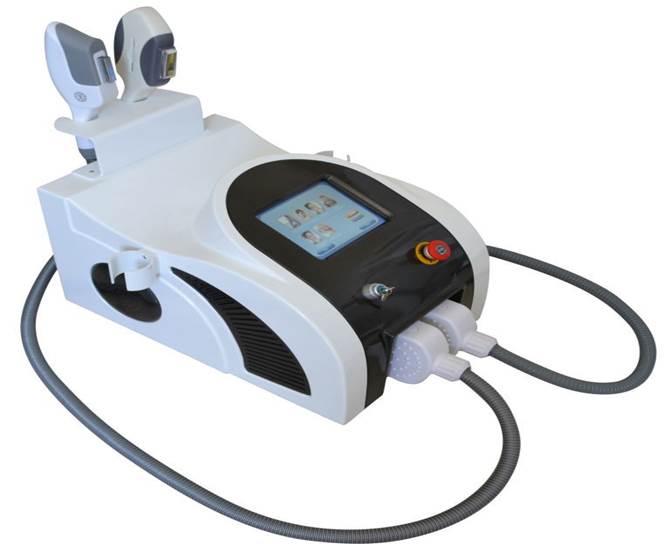
IPL system used in photoepilation salons
The principle of operation of the photoepilator
IPL devices simultaneously emit light waves of various lengths, resulting in an intense flow of energy that affects the hair follicles. Household photoepilators for independent use also work on a similar principle.
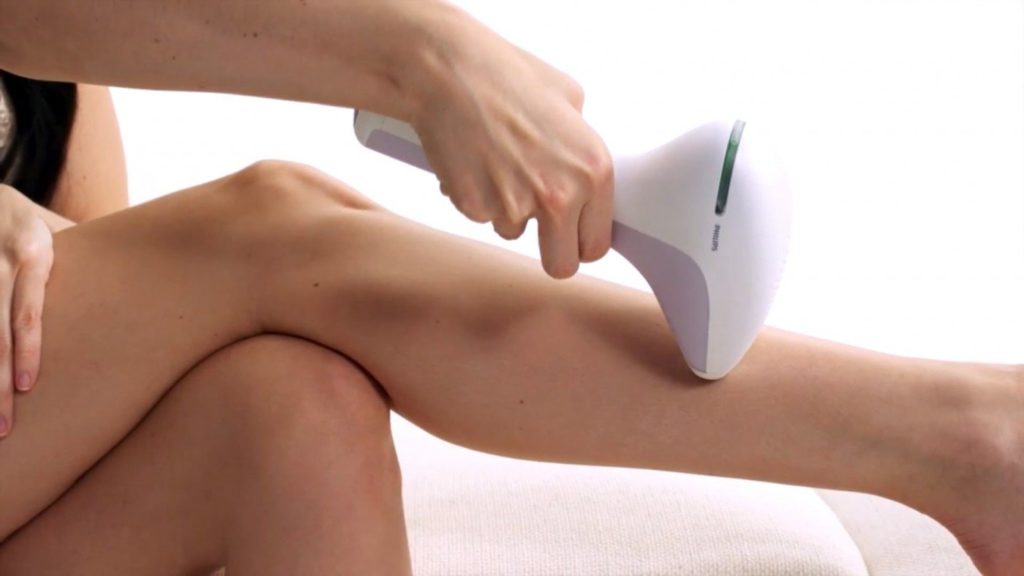
The home photoepilator is compact and convenient
Exposure to light rays causes heating and further destruction of the follicles, a process called photothermolysis. Light energy affects only follicles in the stage of active growth, up to 80% of all available follicles.
The remaining 20% are in the inactive phase and are located deep in the skin. The photoepilator cannot act on dormant follicles, which is why several sessions of this procedure will be needed to completely remove the vegetation.
Initially, IPL systems were developed to treat age-related manifestations on the skin - age spots and dilated vessels. Women who regularly use photoepilation notice a noticeable anti-aging effect after the procedure.
Flash units destroy the follicle by affecting the melanin contained in the hair. Melanin is a pigment, the amount of which determines the color saturation of the hairline. It turns out that the darker the hair and the lighter the skin, the more effective photoepilation.
In addition to photoepilation, it is popular. epilator and waxing.

The process of destruction of the follicle under the influence of flash units
The effectiveness of the photoepilator, its disadvantages and advantages
IPL systems have special settings for changing the length and intensity of light waves. So that photoepilation does not harm a woman’s health, the radiation intensity is adjusted individually in each case. All people have different skin types and hair colors, respectively, the effect of the procedure will be different.
Photoepilation in the salon is carried out by an employee with a medical education, who determines the color type of the client. Household photoepilators are designed so that during the procedure the dermis cells do not lose their viability. Simply put, a home photoepilator is safe for the skin, and strict adherence to the manufacturer's instructions guarantees the result.
Read also: photoepilator hair removal - harmful or not?
Home Photoepilator Efficiency
The main question that worries women: will a self-conducted procedure be effective? Should I buy a photoepilator for independent use at home?
The effectiveness of the photoepilation machine depends on the selected settings mode. After studying the instructions, you can determine your color type and set the optimal mode. But it should be noted that in different parts of the body the color of the skin and vegetation may differ, so the settings must be adjusted. And, of course, the manufacturers made sure that even at maximum power a woman could not harm her own health.
Usually, a course of five to ten procedures with an average interval between them of four to six weeks is enough to remove unwanted vegetation. After the first treatment, the instant effect is usually not observed. Vegetation falls out gradually, approximately during the week.
With each subsequent procedure, hair growth activity will decrease. From session to session, the vegetation will become thinner and lighter. After the course, in most cases, body hair disappears for several years, and in some - forever.
In order to completely get rid of vegetation by summer, you need to start the photoepilation course no later than the end of winter.
Find out, which photoepilator is best for home use.

After a photoepilation course, hair disappears for several years.
Pros and cons of photoepilator
Like any technique for maintaining beauty, photoepilators have certain pros and cons, but we’ll hurry to please women - there are many more advantages. These include:
- Lack of pain during photoepilation.
- Shortness of the procedure: a session on average takes from five to 30 minutes.
- Non-contact principle of exposure - the skin is not injured, the risk of infection and the likelihood of ingrown hair are excluded.
- Hair removal on any part of the body, as well as on the face.
- Side effect of rejuvenation: collagen production is stimulated during photoepilation, the skin is smoothed.
The only disadvantages are the high cost of the device and the inability to remove fluffy, blond or gray hair. Blondes and women of elegant age should better refuse photoepilation and choose a different method of hair removal.
A good alternative in this case is electrolysis. This method of getting rid of excess hair does not limit the use of hair and skin color. In addition, this is the only way in which one hundred percent result is guaranteed.
The disadvantages of the photoepilator are often attributed to the possible occurrence of burns, but such cases are rare, since the developers initially limited the intensity of exposure to light rays in household appliances. If burns appeared on the skin, most likely, we are talking about improper use of the device and non-compliance with the instructions.
Read also: bikini zone epilator - which one to choose?

Consequences - burns after photoepilation
Photoepilator - contraindications and consequences
The photoepilator has contraindications for use, which must be taken into account:
- Oncological diseases, including malignant tumors on the skin.
- Inflammatory processes on the skin of various etiologies: atopic dermatitis, allergic reactions, eczema, psoriasis, herpes.
- Skin parasitic diseases: lichen, scabies.
- Injuries and open wounds of the skin.
- Varicose veins, even in the initial stage of development.
- The presence of a large number of moles.
- Diseases of the heart and blood vessels in the acute stage or in severe form.
- A number of diseases of the endocrine system.
- Lactation and pregnancy.
- Age to 18 years.
As you can see, the photoepilator has contraindications and consequences, the risks of which must be minimized. To do this, consult your doctor before purchasing the device.

Before the first session, consultation with a specialist is necessary
Photoepilator - recommendations for use
If the device is used improperly, unpleasant consequences can occur: burns, skin irritation. Accurate compliance with the instructions of the photoepilator, as well as proper preparation before the procedure and care for the treated areas after it will help to avoid the consequences.
Read also: epilator or shugaring - which removes hair more effectively?
Preparing for photoepilation
Photoepilation begins long before the first session. Two weeks before the first treatment, you should stop visiting the beach or the solarium, as flashlights can leave burns on tanned and dark skin.
Next, you need to make sure that the hairs on the treated area are from one to three millimeters long. It is at this length that the photoepilator acts most effectively. If the vegetation is removed with wax, this must be done two weeks before the procedure. If a shaving device is used, it is enough to remove the hair in the intended treatment area in two to three days.
Photoepilation cannot be performed during a course of antibiotics, antipsychotics, and tranquilizers. These groups of drugs increase the susceptibility of the dermis to UV rays, possibly causing burns.
On the day that photoepilation is planned, cleanse the skin with gentle hygiene products, dry the skin well, and then apply a cooling gel to the hair removal area. This will prevent possible discomfort during hair removal. During the procedure, wear special glasses, the presence of which must be taken care of in advance.
We also recommend that you familiarize yourself with differences between the epilator and the depilator and find out which is better.
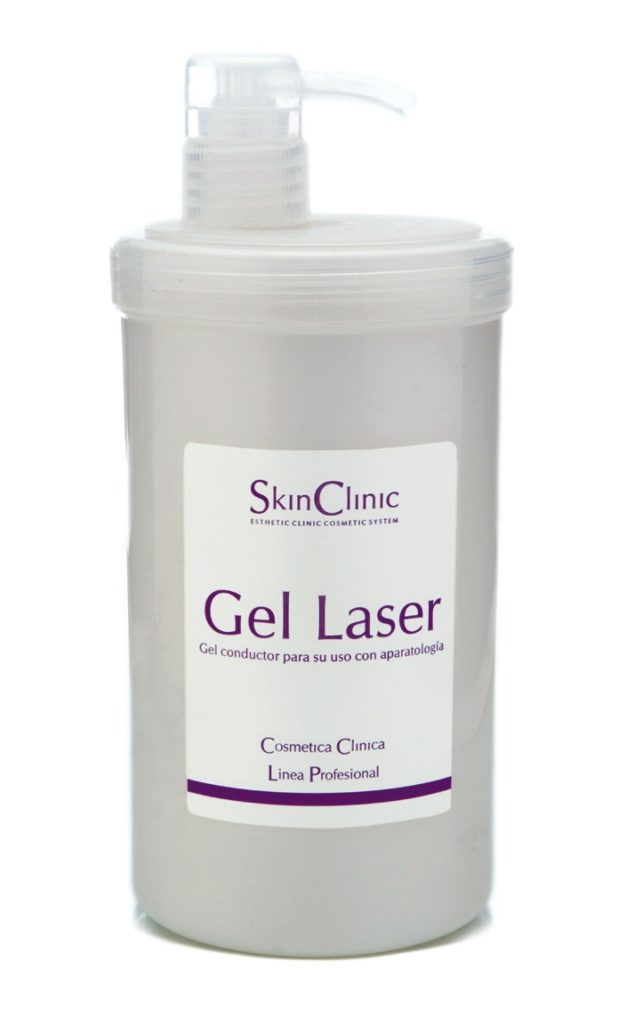
Professional cooling gel for all types of hardware hair removal
Photoepilator setup and procedure
The instructions for photoepilators usually have a color scale by which you can determine the color type of skin and hair and adjust the appropriate mode of operation. In more expensive models, there is an automated detection system, and the device will automatically tune in, just bring it to your skin and hair.

Comparison table of shades of hair and skin in the instructions for the photoepilator
In the process of processing the apparatus for photoepilation emits sound signals, notifying about the beginning and end of light exposure. In the process, pain should not occur, otherwise you can talk about the incorrect setup of the device.
The absence of any sensations is also not a good sign, in this case we are talking about the weak impact and the futility of the session. During photoepilation, slight tingling and warmth are considered normal.
For the first time, photoepilation is recommended to be performed on the skin of the legs. On the face, in the bikini area, armpits, the skin is more delicate.
To get the best result on the armpit area, the skin must be smoothed as much as possible. If there are birthmarks in the treatment area, they can be protected using any universal cream or clerical corrector.
Check out A review of the best hair removal photoepilators at home.
After photoepilation
Skin care after photoepilation is simple. Lubricate the skin immediately after the procedure with any pharmacy ointment containing the active ingredient dexpanthenol: Bepanten, Dexpanten plus, Panthenol, Pantoderm. Dexpanthenol contains vitamin B5, which is responsible for tissue regeneration and helps the skin recover.



Apply ointments containing dexpanthenol after the procedure
During the week, you can not expose the skin to ultraviolet radiation, which means that visits to the solarium and the beach are prohibited. Also, any procedures and activities involving increased sweating are not recommended: playing sports, visiting the sauna, pool.
Eliminate the use of alcohol-containing cosmetics and scrubs containing abrasive particles for a week.After hair removal on the face, try not to use heavy tonal products that clog pores.
According to reviews of women using a photoepilator, hair removal at home is no less effective than in a salon. The main thing is not to miss sessions and properly care for the skin before and after photoepilation.
We also recommend that you familiarize yourself with: which epilator is better to choose for the bikini and legs area.

